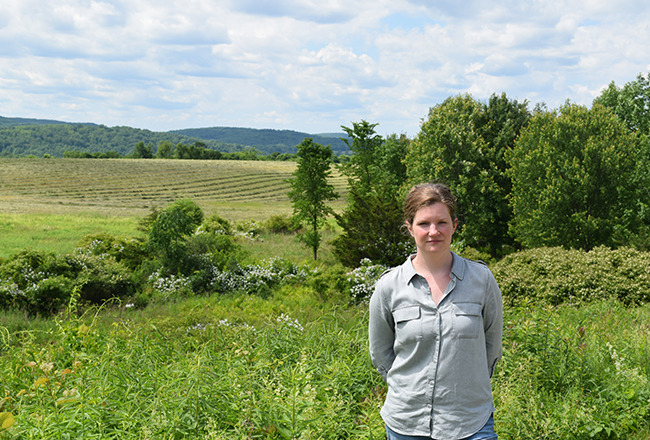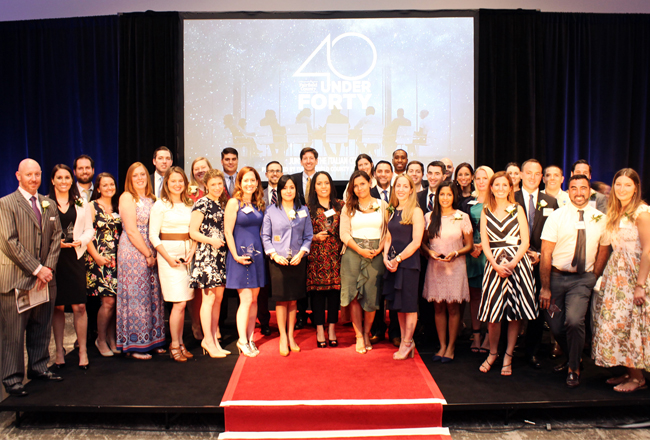
This year marks the 50th anniversary of the founding of the Naromi Land Trust in Sherman, Fairfield County”™s northernmost locality. Since its creation, Naromi Land Trust has protected 64 different parcels totaling about 1,500 acres, or 12 percent of Sherman”™s total land mass; seven of the preserves have a total of 15 miles of hiking trails that are open to the public.
The nonprofit Naromi Land Trust derived its name from a Native American word, which means “water flowing from the hills.” In 2016, Amanda Branson joined the organization as its first executive director. In this edition of Suite Talk, Branson discusses her work in conservation and nonprofit management.
How did the Naromi Land Trust first come about?
“It was created by a small group of concerned citizens, folks who lived in Sherman. There was a pretty big movement of land trusts in the late 1960s and early 1970s, and these people wanted to make sure that the beautiful place that is Sherman stayed the same. So, these people got together in 1968 and formed the organization, although it took quite a few years before we owned any land. Our first big preserve was the Brookland Preserve, which was 60 acres, and we purchased that in 1973.”
Where does the funding come from to run the land trust?
“Private contributions. That”™s it.”
Is this money used to purchase the land within the trust?
“A lot of the holdings have been donated. Some of them we purchased, but when we purchase land we never do that through straight-up contribution from individuals. We have gotten grants from the state and the feds.”
This February, the land trust received accreditation. What did that entail?
“There is a land trust accreditation commission and that is a program of the Land Trust Alliance, which is a national organization that issues the standards and practices for our industry. They look at how we operate in comparison to the standards and practices.
“At a nuts and bolts level, that means we had to submit a lot of documentation about how we do things, what our policies and procedures are, examples of our solicitation materials, and we need to show that we are continuing to update those things. Of the 64 properties within our land trust, we have to visit each one of those at least once a year to makes sure the conservation value on those properties are being protected. It”™s a really extensive process.”
What is the staffing of this organization?
“I”™m full time and Amy Smith, our office manager, is part time, and that is all of the paid staff that we have. We hope to get a summer intern this year, and for everything else we rely on is volunteers. We have about 40 to 45 volunteers.”
What is a typical week like for you?
“What I do in a given week depends on the season and it depends on the week. For right now, we are working on organizing our 50th anniversary gala, so that takes up a bunch of my time. I also do a lot of outreach to our volunteers. I was also just emailing a volunteer because we need to make sure that our boundaries of all of our properties are posted ”” I have a volunteer who is interested in doing that.”
What are some of the more interesting challenges in your work?
“We have a lot of different properties, which means we have a lot of neighbors. So, we have to stay in touch with our neighbors as much as we can. And we are also a nonprofit organization, so we have board meetings and insurance filings, and on weeks when we”™re lucky enough to have a walk, we are promoting that walk on our website and our Facebook page and our e-newsletter. And we have a lot of people contacting us that they”™d like to get out on one of our preserves, so we have that as well.
“As a single-town land trust, we have a lot of responsibilities. We like to carry out a lot of hikes and outreach for our members and people who live in town. And when we acquire a new piece of land, there is a lot of due diligence that we feel is very important to do. To live up to all of our policies and procedures takes a lot of time and funding, and that is fairly difficult to raise in a single small town. Our biggest challenge is raising enough money, and it”™s a particular challenge if you”™re a single town land trust.”
What has been among your most recent achievements?
“We have the Herrick Preserve, which is well known because it has a number of lovely views of the Housatonic River Valley. It also connects with the Appalachian Trail. But for many years, this preserve was landlocked. We now have an agreement with the neighbor that our trail system can pass over their land, but we don”™t own it and it is not protected in perpetuity ”” it is only with this land owner.”
There is a wealth of wildlife in this part of the state. Has poaching been an issue on your properties?
“Over the course of 50 years, there have been incidents. But that”™s not something that I would call one of our perpetual issues. However, we have quite a lot of invasive plants and there is no way that we can eradicate all of them. It would be destabilizing because if we pull out that whole root system, a different invasive would move in.”
How did you come to be involved with the Naromi Land Trust?
“My background is in art. But my family has been involved in conservation for a very long time. My parents were part of the group that founded the Bethlehem Land Trust and my mother was an executive director of a land trust for a very long time. If I was ever home sick from school but not super sick, I was in the office collating things. When I finished with college, I started working in the fine art museum world, but I found it was incredibly difficult to be an artist and work at a museum.
“So, I went back to where my heart was in conservation. I worked for a couple of different organizations: one was River Alliance of Connecticut and I started with a variety of different land trusts, including Naromi, on a consultant basis. And Naromi reached out to me when they decided to hire an executive director on a full-time basis in 2013.”
Ultimately, what do you see as this organization”™s most important accomplishment?
“Our land is protected forever. Having a substantial amount of preserved land is what keeps water quality and air quality high, and in Sherman we value our views ”” they are really spectacular. And some of those hilltops will be like that forever because of Naromi.”





















